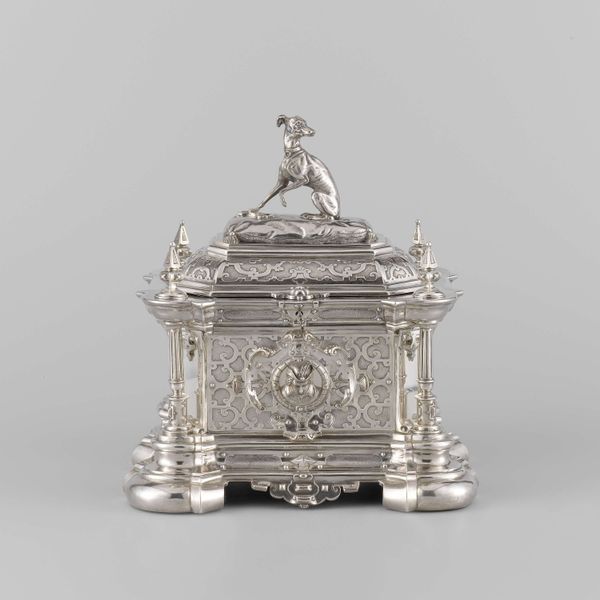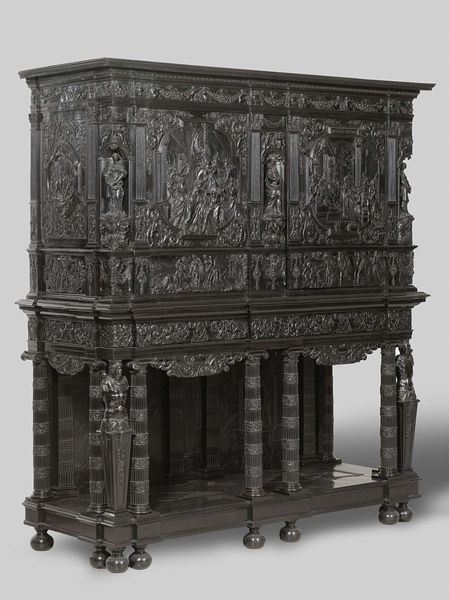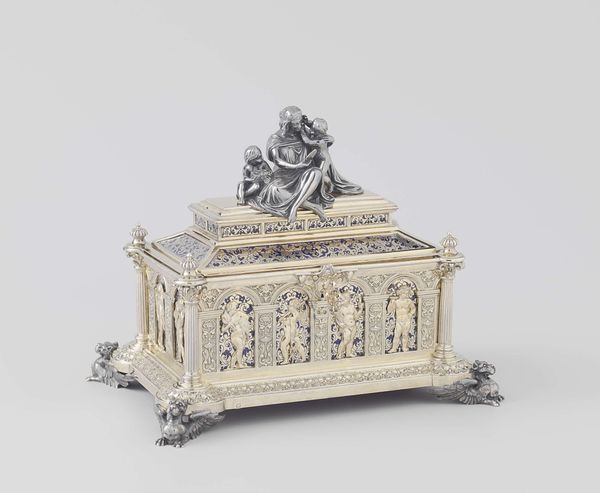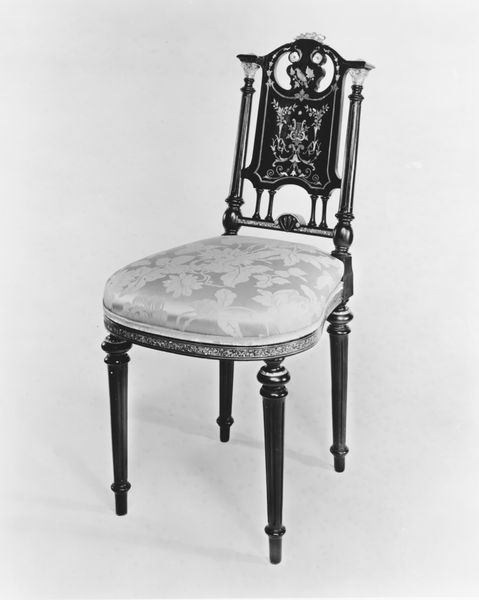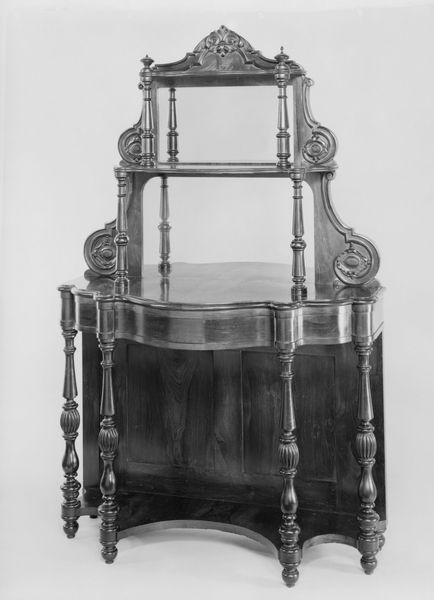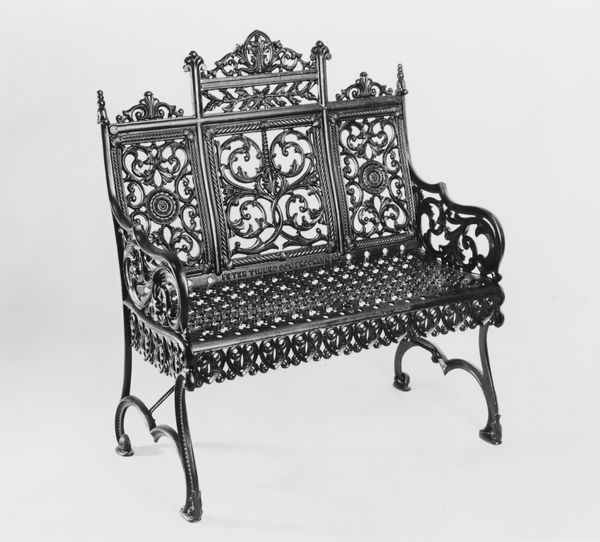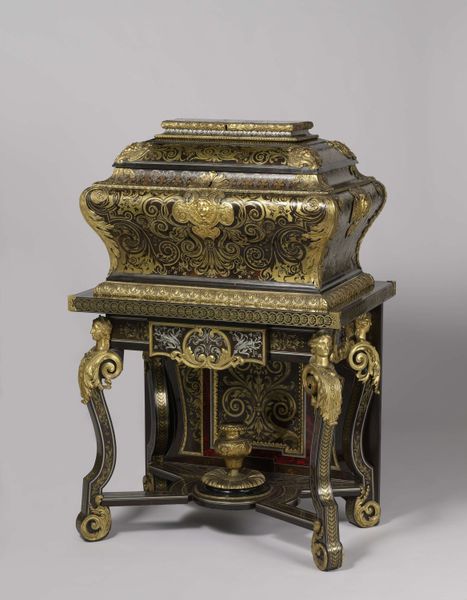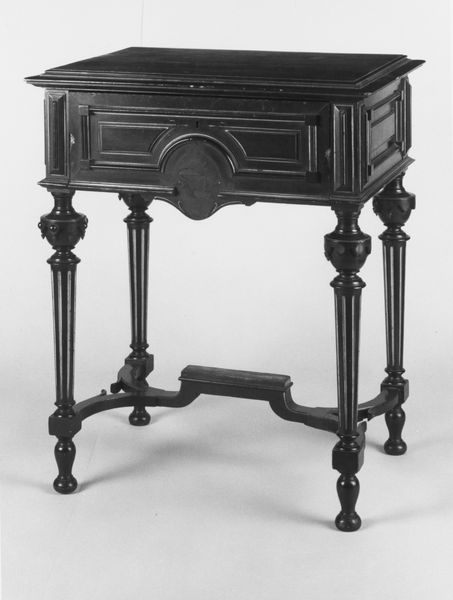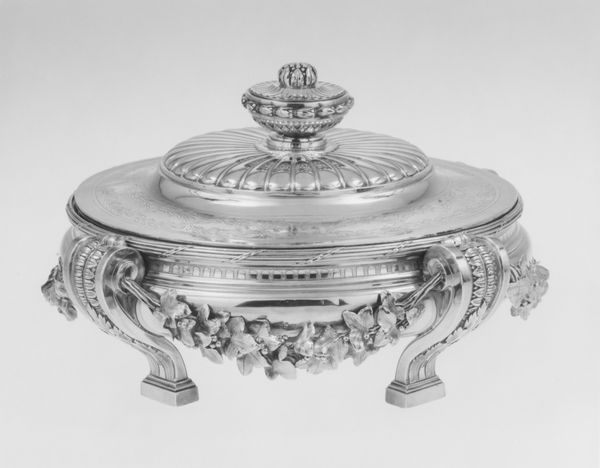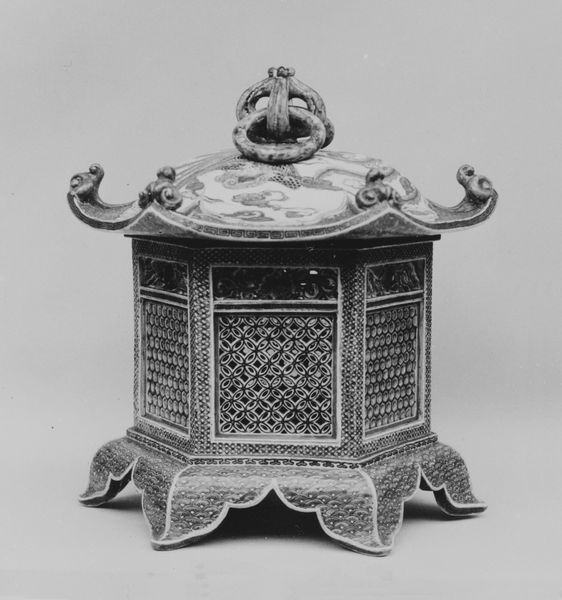
carving, silver, assemblage, metal, sculpture
#
carving
#
silver
#
assemblage
#
metal
#
sculpture
#
mannerism
#
11_renaissance
#
sculpture
#
architectural
#
decorative-art
Dimensions: Overall: 9 × 9 3/4 × 8 1/4 in. (22.9 × 24.8 × 21 cm)
Copyright: Public Domain
Curator: This magnificent object is a casket crafted between 1585 and 1615, likely by the artist Jacob Mores. You can find it on display at the Metropolitan Museum of Art. The materials used in its construction include silver and assemblage, featuring intricate carving and sculpture. Editor: My initial reaction is one of awe. The casket's architectural design and detailed imagery really do give it an almost otherworldly feel, like a reliquary holding secrets rather than just a simple box. Curator: It's an excellent point about architecture. The period of Mannerism really played with proportion, perspective, and often featured elaborate decoration on what might be everyday objects. Editor: And what do you suppose was its use, other than pure display? I wonder what someone chose to safeguard within it. I am just compelled by the lion's feet and the layered figures above, the symbolism of protection and power. Curator: Exactly, these objects often fulfilled specific societal functions tied to ritual and status. While we may not know the specific contents in this case, caskets like these would likely be used to house jewelry, documents or family heirlooms, reinforcing family prominence and social standing. The choice to display it also underscores the theatricality and courtly aspirations. Editor: I'm especially interested in those scenes depicted on the sides. I think they show various cultural, even biblical stories. Curator: Indeed. Pieces such as this were meant to reinforce social values; to be both beautiful objects, status symbols and cultural reference points that served the function of affirming social hierarchy in an era defined by conspicuous displays of wealth. It's truly a window into the artistic values of the Renaissance! Editor: Well, looking at the way images of both power and narrative significance merge, it enriches our perspective, truly allowing us to glimpse the fascinating intersections of power, religion and art back then.
Comments
No comments
Be the first to comment and join the conversation on the ultimate creative platform.

